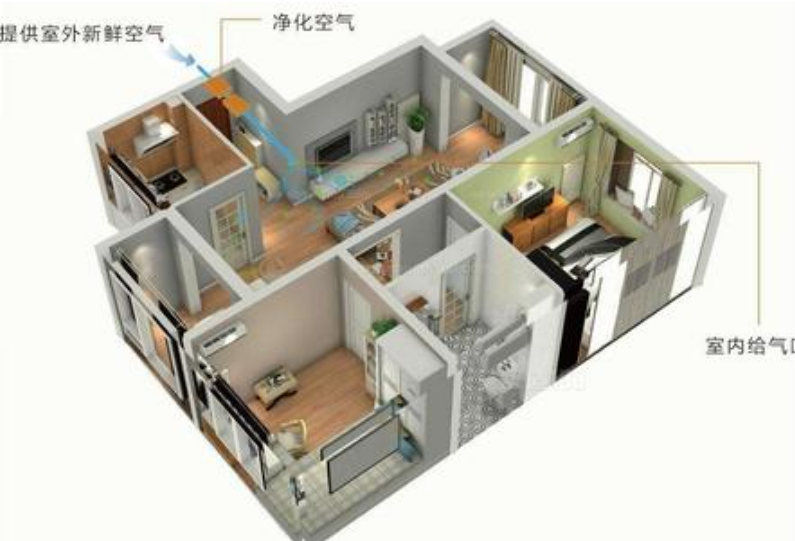Brief introduction of the basic structure of fresh air ventilator
1. Basic structure of large fresh air exchanger
The fresh air heat exchanger is mainly composed of heat exchange system, power system, filtration system, control system, noise reduction system and box body.
1. Heat exchange system
At present, there are two kinds of heat exchangers used in fresh air ventilators at home and abroad, including rotary heat exchanger. From the perspective of normal use and maintenance, static type is better than rotary type, but larger than 2 × 10000 m3 / h large-scale machine can only be realized by rotary heat exchanger, so it can be said that both static type and rotary type have their own advantages and disadvantages
The fresh air exchanger adopts cross flow and static plate heat exchanger, which is convenient to arrange air duct in the equipment and reduce the volume of the whole machine. That is to say, the moving direction of hot and cold gas is perpendicular to each other, and its airflow belongs to convective heat transfer property in turbulent boundary layer.
Therefore, sufficient heat exchange can achieve higher energy saving effect.
2. Power system
The power part of fresh air fan adopts high efficiency (high efficiency) and noise reduction fan. In order to ensure the indoor air quality, the fresh air unit is equipped with indoor space centralized fresh air system, and the main unit supply air and process fresh air are called fresh air unit. The forced standard outdoor fresh air enters the room after filtration, purification and heat exchange treatment, and the indoor harmful gas will be expelled from the room after filtration, purification and heat exchange treatment.
3. Control system
(1) The fresh air ventilator adopts reliable electrical components and can control different air volume through safe and reliable life name operation.
(2) Different control methods are adopted according to different environment.
(3) It can realize automatic, timing and preset. Air conditioning unit and fresh air unit are commonly used and installed with fan box. Although there are differences between fresh air unit and air conditioner, they can complement each other in function. It is suggested that fresh air units should be installed at the same time, and then fan coil units should be installed in each room to learn from each other to achieve the purpose of more energy saving and comfort.
4. Filtration system
The filtration system of fresh air exchanger is divided into four types: primary efficiency, medium efficiency, secondary efficiency and high efficiency. The air filter is installed in the air heat exchanger with two air inlets, which can effectively filter dust particles, fibers and other impurities, effectively prevent the outdoor air of dust and other impurities from entering the room, achieve the purpose of purification, and ensure that the heat exchange part of the main engine is covered with dirt, which affects the performance of the equipment.
5. Shell
The shell of fresh air exchanger adopts cabinet frame structure. In order to ensure the indoor air quality, the fresh air unit is equipped with indoor space centralized fresh air system, and the main unit supply air and process fresh air are called fresh air unit. Different materials, such as cold plate spray, stainless steel plate, can also be selected according to the actual needs of users.
6. Noise reduction system
The inner side of the fresh air exchanger is covered with polyethylene foam. Long term sealing material is used to connect the sheet metal parts, which can effectively reduce the noise of the whole machine (dB).




